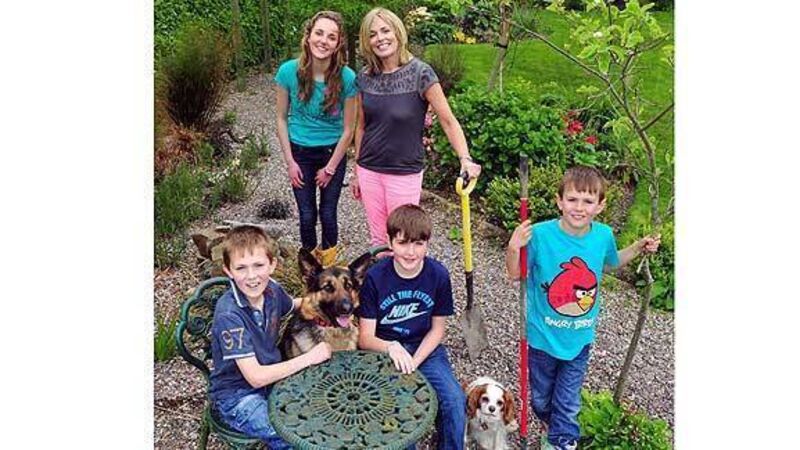Gardening is a healthy alternative to computers for children

But the benefits have no upper or lower age limit: clearing a patch of garden or a window box is an ideal hobby for children, who will enjoy the results and be enticed outside, away from games consoles.
Emma Neville, from Carrigaline, Co Cork, is a solicitor who also runs a garden design company (www.gorgeousgardens.ie). She is a mother-of-four (Julie, 13, Billy, 11, Charlie, 10 and John, seven), and has seen how much enjoyment they get from helping her and her husband, Philip, to grow and harvest their own crops.
“I think it’s extremely important that children understand about food; where it comes from and how easy it is to grow your own,” she says.
“This understanding is the cornerstone to a healthy lifestyle. Recognising and valuing local, home-grown and fresh produce over sugary, processed and fast foods is nearly as important as your child being able to read and write. There is no comparison between a shop-bought punnet of strawberries, blueberries, or raspberries and those you produce yourself.
“We keep hens, too, and they eat all the slugs and snails — which mean my plants and flowers can thrive pest-free, too. We have over an acre and grow every vegetable and fruit under the sun.”
Emma got her ‘green fingers’ from her parents and says giving children simple things to grow encourages their interest.
“I was lucky enough to be brought up by parents who are big into gardening and growing their own,” she says. “I took for granted being sent out to the garden to cut parsley for white sauce, or to grab a head of lettuce for a salad — but, looking back, it was a rare enough thing in the suburbs of Cork in the 1980s.
“My maternal grandfather grew everything, as well. I took my first steps in his garden in Limerick and made a beeline for his apple store — his garden and store rooms were so intriguing to me, as a child.”
With her own children, she picked easy-rewarding things for them to grow, including flowers, rhubarb, pumpkins, potatoes and berries. Last year, as part of a fundraiser for the boys’ national school in Crosshaven, she taught and mentored four classes — about 130 children in total — to grow carrots, tomatoes, sunflowers and pumpkins.
“The kids learned valuable lessons on how to grow edible plants from seed, and how to earn a few bob, too,” she says.
Child psychologist, David Carey, says gardening is an ideal activity for children and helps their development. “There are few things more beneficial for children than to engage in some form of gardening, whether it is outdoors or indoors,” he says. “Gardening teaches children to care for living things. It teaches them patience, while they watch things grow. It teaches them about nature and its wonders, and is the royal pathway to learning how to both live in the world and protect it.”
Gardening also helps children to learn about ecology, proportion and lines and also space and shape.
“These are pre-mathematical skills,” says Carey. “They learn about sorting, as they discover that some plants must be weeded out of the garden and some kept in. They learn about insects and snails and other small, living creatures. They learn about the food chain and that some plants grow to become edible by being under the earth and some by being above the earth.
“The pragmatic truth about gardening is that if you tend your garden, you get a good crop. If you don’t tend it, your crop isn’t good or it may die. These are important life lessons learnt by watching and doing, or by not watching and not doing. Either way, the child learns something.”
* Kids love sowing seeds — particularly bigger seeds like peas, broad beans, French beans, sunflower, courgettes, pumpkin and squash which are easier to handle.
* Choose fruit and vegetables that are fast growing so that they see a quick return — radishes are a good example, which are ready in just three to four weeks. Cress is ready to harvest in just a week or so.
* If they’ve been involved in growing them, kids will often try vegetables they wouldn’t normally touch.
* Top activities for children include: sowing seeds, planting out seedlings, digging holes and watering.
* To maintain interest, measure the plants once a week and keep a diary of growth.
To access some simple food growing challenges to do with your children, sign up for Operation GIY Nation — and receive easy monthly projects via email to try at home. Visit www.giyinternational.org.










